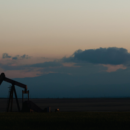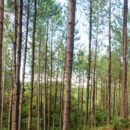FNC News
Maximizing Your Land’s Potential with Renewable Energy
For generations, farmers have worked tirelessly to cultivate the land. But in today’s shifting economy, more landowners are exploring new ways to maximize their property’s value. Renewable energy leases — such as wind and solar — offer an opportunity to generate stable, long-term income while preserving farmland for the future. These opportunities can allow farmers and ranchers to liquidate debt. It often yields money that can be invested in equipment, exchanges, technology, land expansion, or other needs.
With corporations and state policies ramping up their sustainability efforts along with the push for electrification, demand is rising. According to a survey by Purdue University, farmers across the U.S. are fielding offers for solar and wind projects, with some receiving more than $1,000 per acre. Surveys like this highlight the significant financial opportunities available to landowners considering renewable energy leases.
Beyond generating consistent revenue, these agreements help landowners navigate fluctuating commodity prices, reduce debt, and reinvest in equipment, technology, or land expansion.
3 Benefits of Renewable Energy Leases
- Consistent Revenue Stream – Leases can provide predictable, long-term income, often exceeding traditional farming profits. For many landowners, this financial stability can help weather unpredictable market conditions.
- Income Diversification – By diversifying income sources, these agreements offer an alternative revenue source, helping farmers hedge against fluctuating crop prices and economic downturns, offering a much-needed buffer in uncertain times.
- Potential Tax Incentives – Federal and state programs may offer tax benefits for landowners participating in renewable energy initiatives on their farms and before the meter.
While the financial benefits of renewable energy leases are compelling, they also demand long-term commitments that require careful consideration. For example, leases can affect land use, land values, environmental risks, and future farm operations. Weighing those factors before signing on the dotted line is crucial to making an informed decision.
A Checklist of Pre-Lease Considerations
Check for land use limitations. Leasing land for wind or solar can mean decades-long shifts in how the property is used. While it provides financial security, it also limits traditional farming for 20-40 years, impacting overall farm operations and succession planning.
Assess the effects of aesthetic and environmental changes. Renewable energy installations can transform the visual and ecological landscape. Wind turbines tower over fields, with blinking lights at night and noise, while solar panels replace open pastures, potentially affecting wildlife habitats, soil management, weeds, and neighboring properties. While some projects incorporate conservation measures, landowners should assess potential impacts before committing.
Evaluate all potential regulatory hurdles. Navigating zoning laws, Restoration Bonds in place, obtaining permits, and meeting compliance requirements can be time-consuming and complex.
Examine the infrastructure and accessibility of your land. Proximity to transmission lines and substations is crucial. Without proper grid access, projects may face costly delays or become non-viable.
Transmission studies and timelines can take 7-10 years. Commercial wind and solar leases may be in the option payment terms for up to a decade before approved to move to construction and connect into the grid/infrastructure. Distributed/community solar is not restricted with transmission limitations and may be built in less then 5 years since the energy is going right into the local community.
Negotiating a Healthy Lease on Your Land
A well-negotiated lease can provide long-term benefits while protecting your land. You will need to be proactive in assessing the impacts, terms, and structures to safeguard your investment:
Assess Land Impact – Understand how access roads, transmission lines, and construction will affect not just your property but also neighboring farms.
Demand Strong Lease Terms – Work with expert lease review consultants and/or legal counsel to secure fair compensation, clear land reclamation responsibilities, insurance protections like additional insured and protections against unexpected liabilities.
Ensure Proper Mitigation – Hold the developer accountable for ensuring the proper remediation and mitigation of surface and subsurface agricultural infrastructure. Proper plans should be established before construction to ensure the proper remediation and mitigation of surface and subsurface drainage, including but not limited to drainage tile, waterways, culverts, ditches, surface drains, etc.
Vet Developers Carefully – Research the company’s financial stability and track record of projects constructed in your state or nationally. Be wary of middlemen and contact land agents who lack secured buyers for the energy they plan to produce.
Plan for Construction Oversight – Document land conditions and reclamation plans before construction begins to prevent long-term damage to soil, weed management, drainage, or terrain.
Secure Reclamation Guarantees – Ensure contracts include provisions for a bond restoring the land after the lease ends, including soil rehabilitation.
Understand Payment Structures – Lease payments vary widely. During the option period — when developers assess feasibility — landowners may receive as little as $6–$8 per acre annually for wind leases and $25-$50 per acre for solar leases, with much higher payments once construction begins.
For farmers navigating uncertain markets, renewable energy leases present a reliable income stream without forfeiting land ownership. However, the majority of leases may never get built or become operational.
A well-structured lease can transform your land into a financial asset for decades to come. By weighing the risks, negotiating strong terms, and seeking expert guidance, landowners can harness renewable energy as a tool for both economic growth and land preservation — creating a lasting legacy for generations to come.
Robert Veldman is a land management consultant at Pinion, a leading food and agriculture advisory firm. He specializes in helping landowners diversify their revenue streams through environmental conservation, wildlife management, wetlands restoration, and renewable energy projects. With deep expertise in working lands and a strong grasp of policy compliance, Robert provides valuable guidance on renewable leases and other land-use diversification opportunities. Learn more about Robert: https://www.pinionglobal.com/people/robert-veldman/

More News




